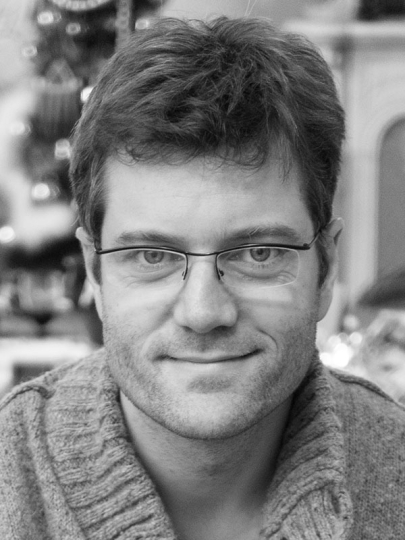Gilles CharvinInstitut de génétique et de biologie moléculaire et cellulaire (IGBMC) - CNRS / Inserm / Université de Strasbourg
Mes recherches
Mes recherches s’intéressent aux mécanismes qui sous-tendent l’homéostasie de la division cellulaire lorsque la cellule est soumise à des modifications de son environnement (stress oxydant, entrée en quiescence) ou à des variations intrinsèques de son état physiologique (vieillissement). Pour cela, je développe une approche qui combine le suivi temporel de cellules individuelles de levure, les techniques de microfluidique, la génétique de la levure et la modélisation mathématique.
Après une thèse en Biophysique (micromanipulation d’ADN, entre 2000 et 2004) à l’ENS Paris sous la direction de David Bensimon, j’ai effectué un postdoc dans le laboratoire de Frederick Cross à l’Université Rockefeller (New York) où j’ai appris les mécanismes de contrôle du cycle cellulaire. J’ai été recruté au CNRS comme chargé de recherches à Lyon en 2008. J’ai ensuite créé une équipe à l’IGBMC (Illkirch) en 2011 et obtenu l’ATIP-Avenir l’année suivante (2012). Je suis directeur de recherches depuis 2018.
Mon projet ATIP-Avenir
Continuous monitoring of the transition to replicative senescence in single yeast cells
Aging is an intrinsic feature of living organisms, which is partly genetically determined. In budding yeast, a mother cell can produce a limited number of daughter cells before it enters senescence. Over the last fifteen years, budding yeast has emerged as a compelling organism in which to investigate the genetic mechanisms that regulate longevity. Yet a precise and quantitative understanding of the transition to replicative senescence is still missing, in part because of the lack of techniques to monitor age-induced cellular processes over a long enough period of time.
In this research project, we will use a technique recently developed in the lab in order to track the successive divisions of a single yeast cell from birth to death using a microfluidic device and automated time-lapse microscopy. Cells are grown in small micro-chambers that let one focus on a few selected mother cells while discarding their progeny.
Preliminary experiments using this new technique have revealed that aging cells undergo stochastic and partly reversible cellular “crises” associated with cell cycle arrest and induction of stress response. Therefore, this project will first aim at characterizing the effect of these crises on cell survival, as well as the detailed crisis scenario, paying particular attention to hallmarks of stress response and autophagy. The second part of this proposal will focus on the asymmetrical segregation of cellular damages between mother and daughter, which is thought to ensure daughter cell rejuvenation. In the last part of this research project, we will investigate the effect of a dynamically changing environment on the replicative lifespan.
This novel live cell imaging approach, because it allows us to capture long term cellular processes in a dynamic manner and with single cell resolution, will very likely modify the current view on the transition to senescence - from a progressive and continuous process to a sequence of stochastic and dynamic events.
